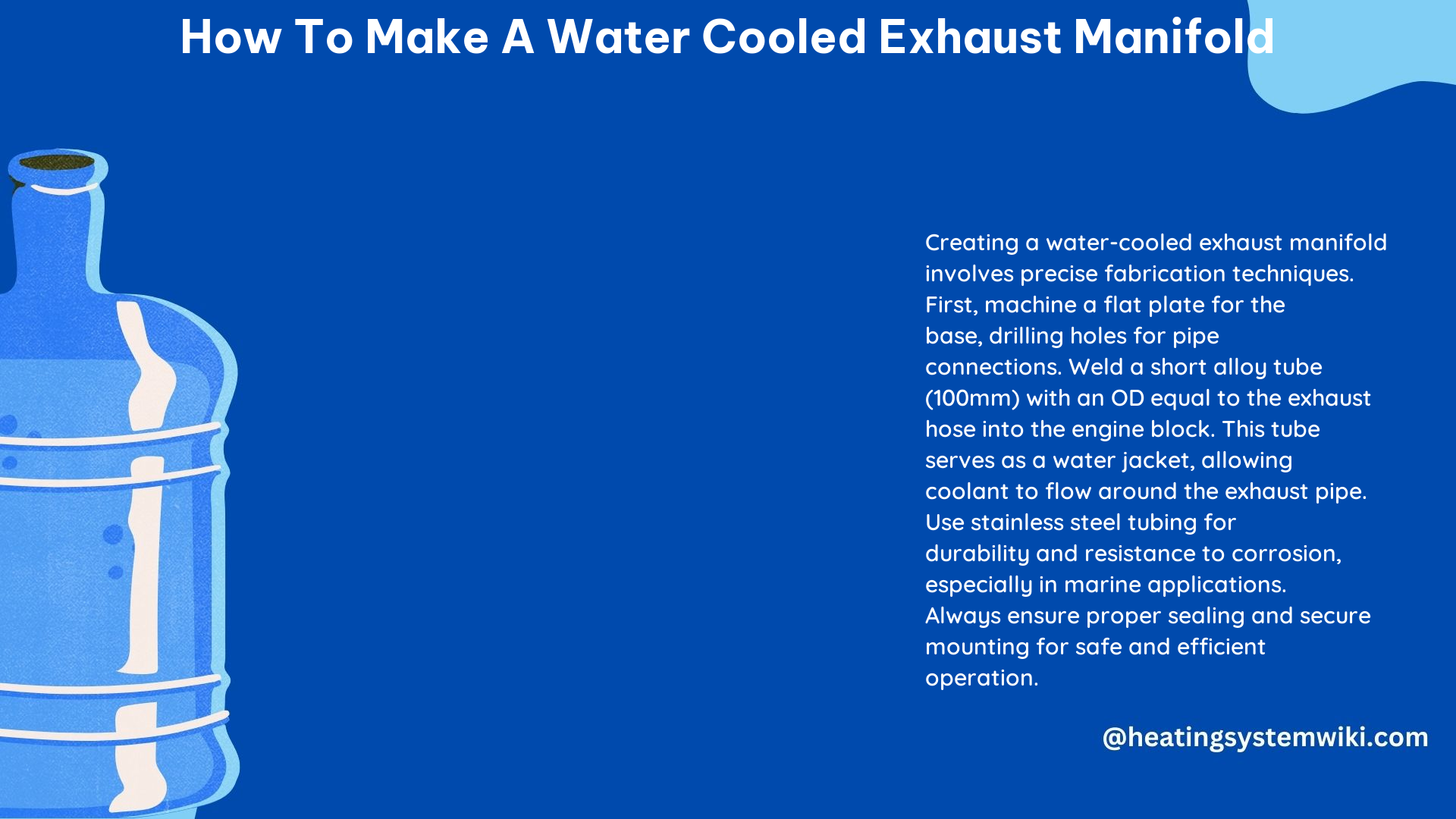Making a water-cooled exhaust manifold is a complex yet rewarding DIY project that can significantly improve the performance and efficiency of your engine. This detailed guide will walk you through the step-by-step process of designing, fabricating, and installing a custom water-cooled exhaust manifold, complete with advanced technical specifications and hands-on tips.
Designing the Manifold
The first step in creating a water-cooled exhaust manifold is to design it to fit your specific engine. The manifold should be made of a material that can withstand high temperatures and corrosion, such as stainless steel. The design should prioritize efficient exhaust gas flow and effective water cooling.
When designing the manifold, consider the following key factors:
- Tube Diameter: The tube diameter should match the diameter of the exhaust ports on your engine. Measure the exhaust ports precisely using a digital caliper to ensure a perfect fit.
- Tube Length: All the tubes in the manifold should be the same length to maintain even exhaust gas flow.
- Manifold Shape: The overall shape of the manifold should be optimized for your engine’s layout and packaging constraints. Common shapes include a simple Y-shaped design or a more complex multi-branch configuration.
- Water Jacket Design: The water jacket, which surrounds the exhaust tubes, should be designed to maximize heat transfer from the hot exhaust gases to the cooling water. Consider the thickness, material, and attachment method of the water jacket.
Cutting the Tubes

Once you have finalized the manifold design, the next step is to cut the stainless steel tubes to the correct length. Use a high-quality pipe cutter or a metal cutting saw to ensure clean, precise cuts. Double-check the measurements to ensure all the tubes are the same length.
Welding the Tubes
Carefully weld the stainless steel tubes together using a TIG (Tungsten Inert Gas) welder. The welds should be strong, smooth, and free of any gaps or leaks. Use a custom-made welding jig to hold the tubes in place during the welding process, ensuring perfect alignment and consistency.
When welding the manifold, consider the following best practices:
- Welding Rod: Use a stainless steel or aluminum welding rod that is compatible with the manifold material.
- Welding Technique: Employ a steady, consistent welding technique to produce high-quality, leak-proof welds.
- Weld Inspection: Carefully inspect each weld for any imperfections or weaknesses that could compromise the manifold’s integrity.
Adding Water Jackets
The next step is to fabricate and install the water jackets around the exhaust tubes. The water jackets should be made of a corrosion-resistant material, such as copper or brass, and should fit snugly around the tubes. Use a lathe or a milling machine to precisely shape the water jackets to the correct dimensions.
When designing and installing the water jackets, keep the following in mind:
- Jacket Thickness: The water jacket should be 1-2 mm thick to provide adequate cooling without adding unnecessary weight.
- Jacket Material: Copper or brass are the preferred materials for water jackets due to their excellent thermal conductivity and corrosion resistance.
- Jacket Attachment: The water jackets should be securely attached to the exhaust tubes, either through a tight fit or with the use of high-temperature adhesives or sealants.
Installing the Manifold
Once the manifold is fully assembled, it’s time to install it on your engine. Use high-temperature exhaust gaskets and high-strength bolts to securely fasten the manifold to the engine. Ensure that the manifold is properly aligned and that there are no leaks.
Testing the Manifold
Before using the manifold on your engine, it’s essential to thoroughly test it for any leaks or issues. Start by pressurizing the water jacket with a water pressure tester and checking for any signs of leakage. Then, run the engine and carefully inspect the manifold for any exhaust gas or water leaks.
If the manifold passes the initial tests, you can proceed to use it on your engine. Remember to monitor the manifold’s performance and conduct regular maintenance to ensure its continued reliability and efficiency.
Technical Specifications
- Material: Stainless steel, copper, or brass
- Tube Diameter: Same as exhaust ports on the engine
- Tube Length: Same for all tubes
- Water Jacket Material: Copper or brass
- Water Jacket Thickness: 1-2 mm
- Welding Method: TIG welding
- Welding Rod: Stainless steel or aluminum
- Welding Jig: Custom-made or purchased
- Exhaust Gaskets: High-temperature gaskets
- Bolts: High-strength bolts
DIY Tips
- Use a digital caliper to accurately measure the diameter and length of the exhaust ports on your engine.
- Utilize a lathe or a milling machine to fabricate the water jackets to the precise dimensions.
- Employ a TIG welder to weld the tubes and water jackets, ensuring strong, leak-proof joints.
- Use a custom-made welding jig to hold the tubes in place during the welding process.
- Install the manifold using high-temperature gaskets and high-strength bolts.
- Thoroughly test the manifold for leaks before using it on your engine.
By following this comprehensive guide and adhering to the technical specifications, you can successfully create a custom water-cooled exhaust manifold that will enhance the performance and efficiency of your engine. Remember to prioritize safety, attention to detail, and thorough testing throughout the entire process.
References:
– Ever Build a Homemade Exhaust Manifold?
– DIY Water Cooled Exhaust Manifold
– DIY Water Cooled Exhaust Manifold
– DIY Water Cooled Exhaust Manifold
– DIY Water Cooled Exhaust Manifold
